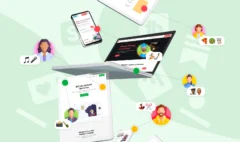What is Social Media Influencing and Why is it Important?
What is Social Media Influencing and Why is it Important?
Introduction
Social media influencing is the process of creating and sharing content on social media platforms to influence the opinions, behaviors, or decisions of a large and engaged audience. Social media influencers are people who have established their authority, credibility, and popularity in a specific niche or industry, and have the power to affect the purchasing choices of their followers.
Social media influencing is important for several reasons, such as:
- It helps brands reach and connect with their target customers in an authentic and organic way
- It helps consumers discover new products, services, or solutions that match their needs, preferences, or values
- It helps influencers earn money, recognition, or satisfaction by sharing their passion, expertise, or creativity with their audience
- It helps society raise awareness, educate, or inspire people on various topics, issues, or causes
In this article, we will explore the different types of social media influencers, the benefits and challenges of social media influencing, and the best practices for becoming a successful social media influencer.
Types of Social Media Influencers
Social media influencers can be categorized based on different criteria, such as:
- The size of their following: Social media influencers can have different levels of reach and impact, depending on the number of followers they have. Some common classifications are:
- Nano-influencers: These are influencers who have less than 10,000 followers, but have a high level of engagement and trust with their audience. They are often seen as experts or enthusiasts in a specific niche or local community, and can offer personalized and authentic recommendations to their followers.
- Micro-influencers: These are influencers who have between 10,000 and 100,000 followers, and have a loyal and niche-specific audience. They are often seen as relatable and influential peers, and can offer credible and relevant opinions to their followers.
- Macro-influencers: These are influencers who have between 100,000 and 1 million followers, and have a broad and diverse audience. They are often seen as celebrities or industry leaders, and can offer exposure and awareness to their followers.
- Mega-influencers: These are influencers who have more than 1 million followers, and have a massive and global audience. They are often seen as icons or stars, and can offer prestige and popularity to their followers.
- The type of content they create: Social media influencers can create different types of content, depending on the platform, format, and style they use. Some common types are:
- Bloggers: These are influencers who create written content on their own websites or blogs, where they share their opinions, experiences, or stories on various topics. They can also use other platforms, such as Medium, WordPress, or Blogger, to distribute their content and reach a wider audience.
- Vloggers: These are influencers who create video content on platforms such as YouTube, Vimeo, or Twitch, where they showcase their skills, talents, or personalities on various topics. They can also use other platforms, such as Instagram, TikTok, or Snapchat, to share short-form or live videos with their audience.
- Podcasters: These are influencers who create audio content on platforms such as Spotify, Apple Podcasts, or SoundCloud, where they discuss, interview, or educate their audience on various topics. They can also use other platforms, such as Twitter, Facebook, or LinkedIn, to promote their podcasts and engage with their listeners.
- Photographers: These are influencers who create visual content on platforms such as Instagram, Pinterest, or Flickr, where they display their artistic, aesthetic, or professional photos on various topics. They can also use other platforms, such as Facebook, Twitter, or Tumblr, to share their photos and interact with their fans.
- The niche or industry they belong to: Social media influencers can belong to different niches or industries, depending on the topic, theme, or category they focus on. Some common niches are:
- Fashion: These are influencers who create content related to clothing, accessories, or beauty products, and share their style, trends, or tips with their audience. They can also collaborate with fashion brands, designers, or magazines to promote their products or services.
- Travel: These are influencers who create content related to destinations, cultures, or experiences, and share their adventures, recommendations, or guides with their audience. They can also partner with travel agencies, airlines, or hotels to promote their offers or deals.
- Fitness: These are influencers who create content related to health, wellness, or fitness, and share their routines, goals, or advice with their audience. They can also work with fitness brands, gyms, or trainers to promote their products or services.
- Food: These are influencers who create content related to cooking, baking, or eating, and share their recipes, reviews, or tips with their audience. They can also team up with food brands, restaurants, or chefs to promote their products or services.
Benefits and Challenges of Social Media Influencing
Social media influencing can have many benefits, both for the influencers and the brands they work with, such as:
- Increased brand awareness: Social media influencers can help brands increase their visibility, recognition, and reputation among their target audience, by creating and sharing engaging and relevant content that showcases their products or services.
- Improved customer loyalty: Social media influencers can help brands improve their customer loyalty, retention, and advocacy, by creating and sharing authentic and trustworthy content that builds trust and rapport with their audience.
- Enhanced customer acquisition: Social media influencers can help brands enhance their customer acquisition, conversion, and sales, by creating and sharing persuasive and influential content that drives action and purchase decisions among their audience.
- Reduced marketing costs: Social media influencers can help brands reduce their marketing costs, by providing a more cost-effective and efficient way of reaching and engaging their potential customers, compared to traditional advertising methods.
- Personal and professional growth: Social media influencers can also benefit from their own personal and professional growth, by pursuing their passion, expressing their creativity, developing their skills, expanding their network, and earning money, recognition, or satisfaction from their content creation.
However, social media influencing can also have some challenges, both for the influencers and the brands they work with, such as:
- High competition: Social media influencing is a highly competitive and saturated market, where influencers have to constantly create and share original and quality content, to stand out from the crowd and attract and retain their audience.
- High expectations: Social media influencing is a highly demanding and stressful job, where influencers have to constantly meet and exceed the expectations of their audience, brands, and platforms, to maintain their reputation and performance.
- High risks: Social media influencing is a highly risky and uncertain career, where influencers have to deal with various issues, such as privacy, security, legality, ethics, or backlash, that can affect their personal and professional lives.
- Low trust: Social media influencing is a highly controversial and skeptical industry, where influencers have to face various challenges, such as fake followers, bots, scams, or frauds, that can undermine their credibility and authenticity.
- Low control: Social media influencing is a highly dynamic and unpredictable industry, where influencers have to cope with various changes, such as algorithm updates, platform policies, or audience preferences, that can affect their visibility and reach.
Best Practices for Becoming a Successful Social Media Influencer
Becoming a successful social media influencer is not an easy task, but it is definitely possible if you follow some best practices, such as:
- Define your goals and objectives: Before you start creating and sharing content, you need to define your goals and objectives, such as what you want to achieve, why you want to achieve it, and how you will measure it. This will help you focus your efforts and track your progress.
- Find your niche and audience: After you define your goals and objectives, you need to find your niche and audience, such as what you are passionate about, what you are good at, and who you want to reach. This will help you differentiate yourself and appeal to your audience.
- Choose your platform and content: Once you find your niche and audience, you need to choose your platform and content, such as what type and format of content you want to create, and what platform you want to use. This will help you optimize your content and visibility.
- Create and share valuable content: When you choose your platform and content, you need to create and share valuable content, such as content that provides information, entertainment, or inspiration to your audience, and showcases your expertise, personality, or creativity. This will help you engage and influence your audience.
- Post regularly and consistently: To create and share valuable content, you need to post regularly and consistently, such as content that follows a schedule, frequency, and quality that meets your audience’s expectations and needs. This will help you establish your authority and credibility.
- Connect and collaborate with your community: Besides posting regularly and consistently, you need to connect and collaborate with your community, such as your followers, other influencers, or brands, and interact, involve, or partner with them. This will help you build your relationships and reputation.
- Analyze and improve your performance: Finally, you need to analyze and improve your performance, such as using analytics, metrics, or feedback to evaluate your results, identify your strengths and weaknesses, and implement changes or improvements. This will help you grow your influence and achieve your goals.
Conclusion
Social media influencing is the process of creating and sharing content on social media platforms to influence the opinions, behaviors, or decisions of a large and engaged audience. Social media influencers are people who have established their authority, credibility, and popularity in a specific niche or industry and have the power to affect the












